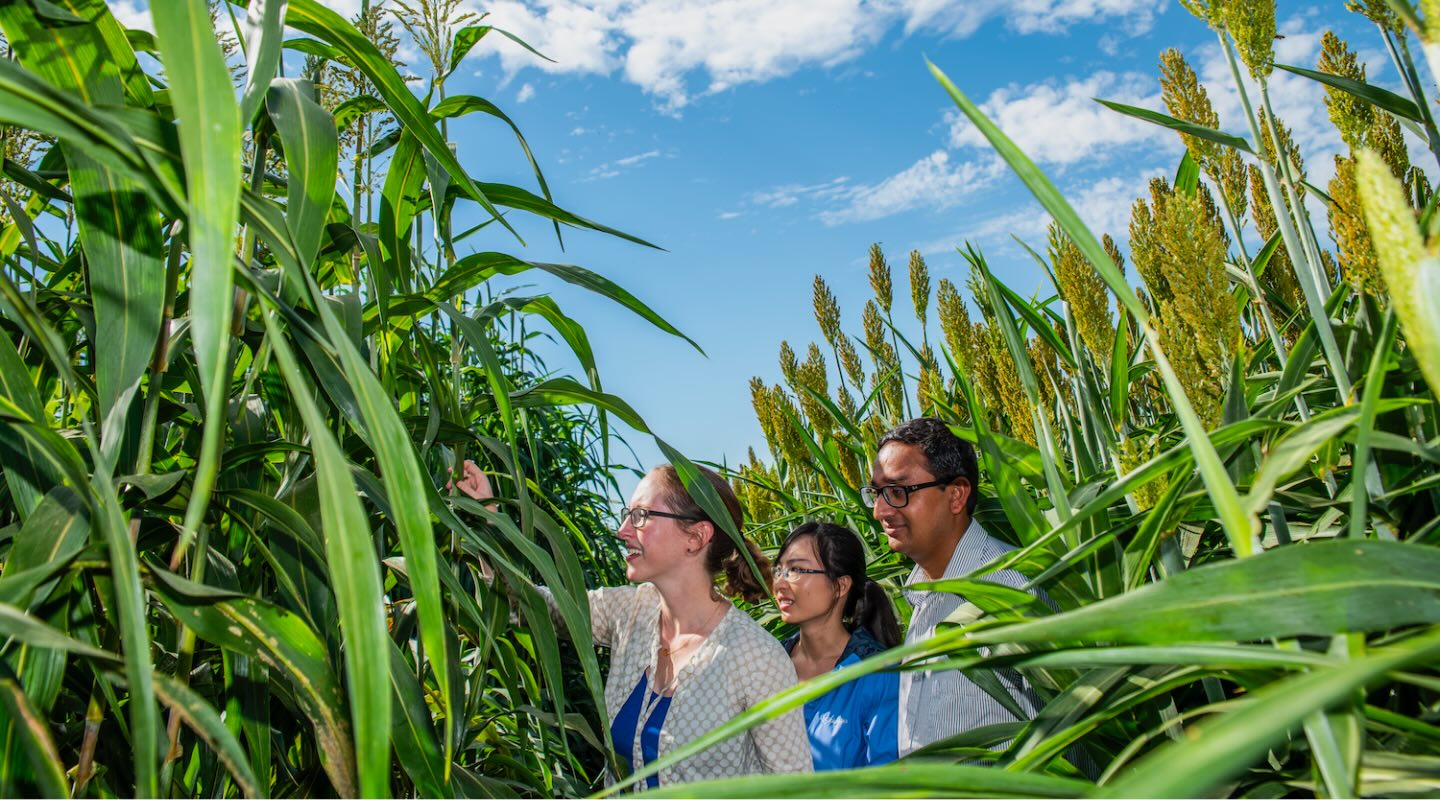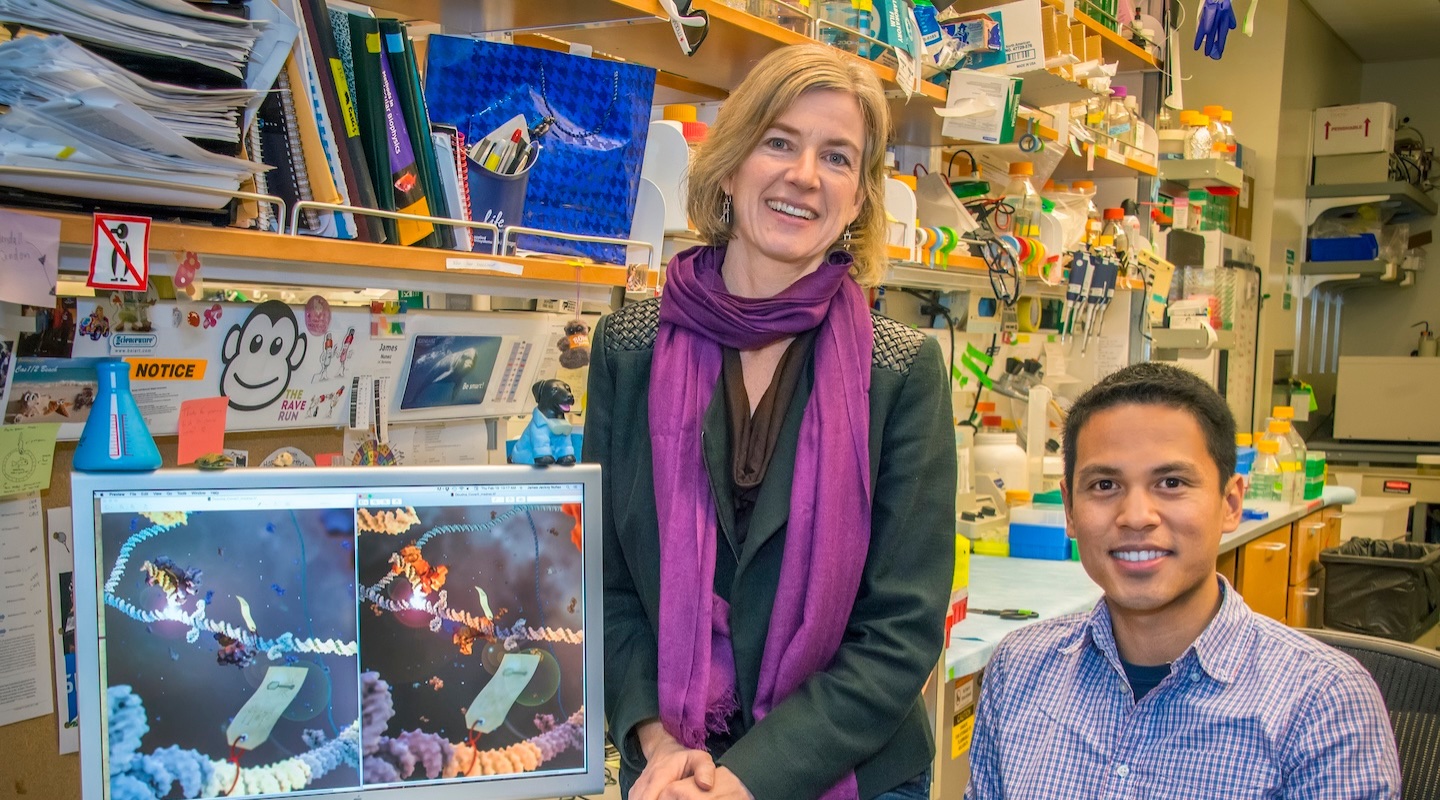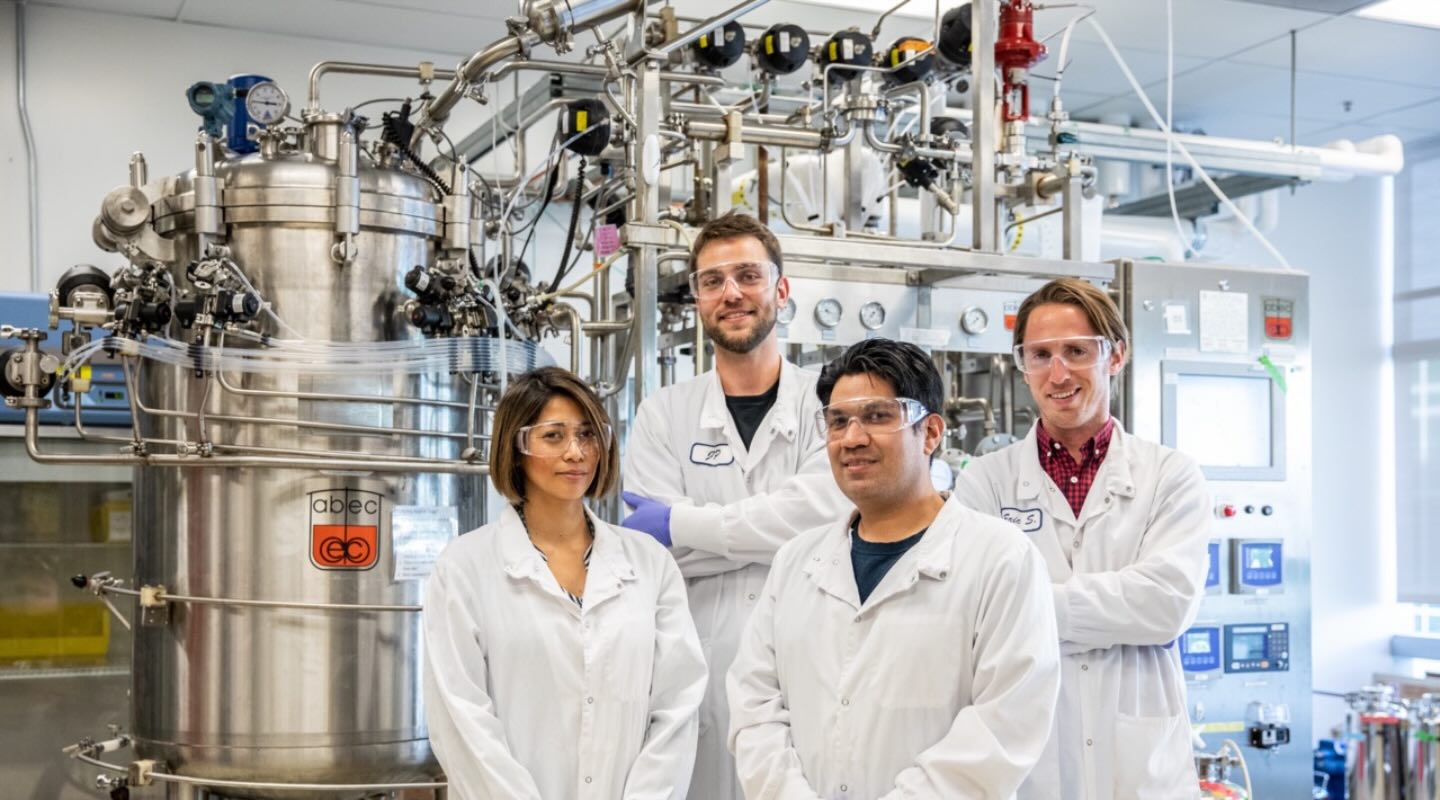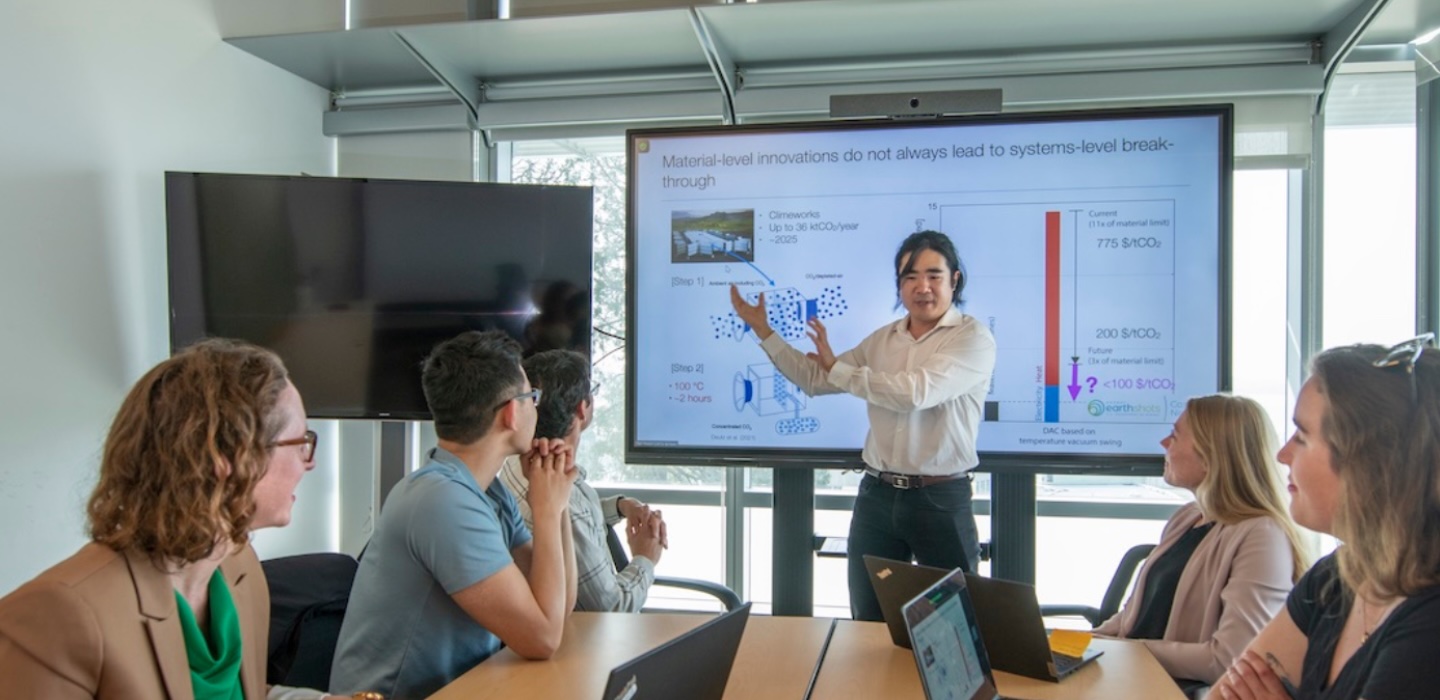Biomanufacturing is a type of production that harnesses the molecular machinery in microbes, cells, and plants to produce a variety of valuable compounds. This approach enables efficient biomanufacturing of products that are traditionally made in limited quantities or using environmentally unfriendly practices, and to make entirely new molecules with exciting properties, such as innovative fuels, chemicals, foods, medicines, materials, and even rocket fuel.
U.S. biomanufacturing is currently estimated to add more than $210 billion to the economy every year, and this number will likely increase as more bioproducts are developed.
Berkeley Lab scientists are celebrated experts in all facets of biomanufacturing, from the first stage of designing host organisms, up to the final work of refining production processes at the pre-pilot and pilot scale, which are important steps on the way to industrial scale. Read on to learn about five of our strengths in this rapidly evolving field.
Blake Simmons, director of the Biological Systems and Engineering Division in the Biosciences Area, speaks on how biomanufacturing supports the U.S. goal of increased domestic production.

Pushing the Boundaries of Bioengineering
Researchers at Berkeley Lab have designed microbes that can synthesize complex molecules naturally produced by other organisms using sophisticated gene editing. In 2022, a team led by synthetic biology pioneer Jay Keasling, a senior faculty scientist in Berkeley Lab's Biosciences Area, announced the development of a strain of yeast that produces the plant-derived anti-cancer compound vinblastine following 56 genetic edits, including the insertion of 35 plant genes and modifications to ten native yeast genes.
The breakthrough will allow drug makers to generate large quantities of vinblastine using an easily cultured microbe - in fact, the same microbe humans have been using for millennia to make beer and bread. The drug is used in chemotherapy regimens against many types of cancer, and is often in shortage because the high demand can't be met by the traditional manufacturing process, which relies on harvesting very small quantities of two precursor chemicals from the native plant.
In addition to their longstanding work designing multi-gene pathways for medicinal compounds, Keasling and his colleagues apply their approach to making a diverse range of other products, including new-to-nature energy-dense fuel molecules for aviation and rocketry and polymers for infinitely recyclable plastic. These efforts represent some of the longest synthetic gene pathways ever designed.

Unlocking a Vast Plant Resource
One of the core missions of the Joint BioEnergy Institute (JBEI), a DOE Bioenergy Research Center managed by Berkeley Lab, is to develop techniques to convert the planet's abundant supply of non-edible plant material, lignin, into biofuels and bioproducts. Every year, hundreds of millions of tons of herbaceous and woody plant tissues are left over from post-harvest crops or generated by forest management practices. The energy stored within these plant tissues often goes to waste because it's difficult to efficiently break the complex polymers into simpler building-block molecules.
JBEI scientists are leading complementary efforts to crack open this chemical treasure chest by coupling targeted chemical pretreatments and the capabilities of bacteria and fungi that can digest these processed biomass tissues in nature. Several teams at JBEI are optimizing affordable and scalable chemical pretreatments that can convert fibrous biomass into bioavailable sugars and lignin-derived compounds. Others are working to engineer culturable microbial strains that can metabolize these sugars and intermediates in order to make products.
If the research is successful, waste biomass could one day be converted into useful products at biorefineries or manufacturing plants, ideally located near their sources: hundreds of facilities near agricultural and forested regions across the country.

The Origins of CRISPR and Current Uses
In 2008, Biosciences Area faculty scientist Jennifer Doudna conducted foundational research into the naturally occurring bacterial immune defense system that she and colleagues later modified to invent the Nobel Prize-winning CRISPR-Cas gene editing platform. Today, CRISPR-Cas technologies provide a streamlined toolkit that scientists can use to modify genes in any organism, ushering in a new era of biological research and enabling development of revolutionary bio-based products and medical treatments. CRISPR-Cas is now the go-to approach to engineer a host species for biomanufacturing. It allows scientists to insert complex sequences with multiple genes, increase or decrease expression levels, and turn off unnecessary genes with significantly greater efficiency than previous methods.
Doudna's initial investigation into CRISPR was funded by the Laboratory Directed Research & Development (LDRD) Program. This program, supported by the U.S. Congress, allows national laboratories to invest in innovative research that might not be covered by traditional funding sources. Doudna is currently using advanced CRISPR tools to develop methods for enhancing lignin breakdown using gene edited microbial communities at JBEI, where she is a scientific lead in the Biological Lignin Depolymerization group.

Bridging the Scales Between Invention and Launch
Berkeley Lab is home to a unique group of experts who specialize in developing production processes for new bio-based products. Our teams collaborate with scientists from other institutions, start-ups, and industry to bring exciting new technologies from the lab bench to the market. We help refine genetic modifications to increase yield and efficiency, troubleshoot challenges that arise when culturing organisms at large scales, and design purification processes to effectively isolate the target compounds.
Established in 2009, the Advanced Biofuels and Bioproducts Process Development Unit (ABPDU) has worked with more than 79 industry partners to launch a diverse range of products including plastics made from methane waste gas, animal-free collagen for supplements and beauty products, and outdoor gear made from algae. The ABPDU is one of the only facilities in the world that offers access to the technical support and equipment necessary to bridge the gap between pilot scale and industrial scale.
Berkeley Lab is also a member of the Agile BioFoundry, a consortium of national laboratories that focuses on accelerating bioproduct development from initial host engineering to scale up, and engages in partnerships that result in technology transfer to industry.

Analyzing Bioproducts for Success
Berkeley Lab scientists at the ABPDU and JBEI are leaders in the field of technoeconomic analysis (TEA) and lifecycle assessment (LCA) - approaches that paint a picture of the economic and environmental impacts that an early-stage technology could have in the future. Collaboration with our TEA and LCA experts helps innovators address potential issues relating to supply chains and material costs, distribution, sustainability, and price competitiveness while their product is still in development. We have applied these approaches to many emerging technologies, such as our infinitely recyclable plastic and advanced biofuels.
And for researchers and companies that can't work with us directly, our experts have developed two publicly available web-based software tools that can quickly test different scenarios and explore viable bio-based fuels and products.






